HSBC 2006 Annual Report Download - page 51
Download and view the complete annual report
Please find page 51 of the 2006 HSBC annual report below. You can navigate through the pages in the report by either clicking on the pages listed below, or by using the keyword search tool below to find specific information within the annual report.-
 1
1 -
 2
2 -
 3
3 -
 4
4 -
 5
5 -
 6
6 -
 7
7 -
 8
8 -
 9
9 -
 10
10 -
 11
11 -
 12
12 -
 13
13 -
 14
14 -
 15
15 -
 16
16 -
 17
17 -
 18
18 -
 19
19 -
 20
20 -
 21
21 -
 22
22 -
 23
23 -
 24
24 -
 25
25 -
 26
26 -
 27
27 -
 28
28 -
 29
29 -
 30
30 -
 31
31 -
 32
32 -
 33
33 -
 34
34 -
 35
35 -
 36
36 -
 37
37 -
 38
38 -
 39
39 -
 40
40 -
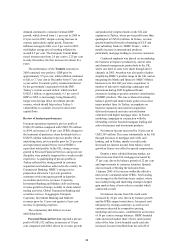 41
41 -
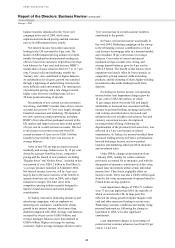 42
42 -
 43
43 -
 44
44 -
 45
45 -
 46
46 -
 47
47 -
 48
48 -
 49
49 -
 50
50 -
 51
51 -
 52
52 -
 53
53 -
 54
54 -
 55
55 -
 56
56 -
 57
57 -
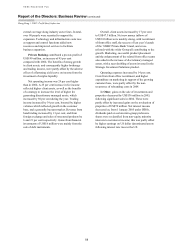 58
58 -
 59
59 -
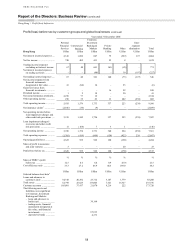 60
60 -
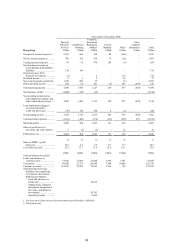 61
61 -
 62
62 -
 63
63 -
 64
64 -
 65
65 -
 66
66 -
 67
67 -
 68
68 -
 69
69 -
 70
70 -
 71
71 -
 72
72 -
 73
73 -
 74
74 -
 75
75 -
 76
76 -
 77
77 -
 78
78 -
 79
79 -
 80
80 -
 81
81 -
 82
82 -
 83
83 -
 84
84 -
 85
85 -
 86
86 -
 87
87 -
 88
88 -
 89
89 -
 90
90 -
 91
91 -
 92
92 -
 93
93 -
 94
94 -
 95
95 -
 96
96 -
 97
97 -
 98
98 -
 99
99 -
 100
100 -
 101
101 -
 102
102 -
 103
103 -
 104
104 -
 105
105 -
 106
106 -
 107
107 -
 108
108 -
 109
109 -
 110
110 -
 111
111 -
 112
112 -
 113
113 -
 114
114 -
 115
115 -
 116
116 -
 117
117 -
 118
118 -
 119
119 -
 120
120 -
 121
121 -
 122
122 -
 123
123 -
 124
124 -
 125
125 -
 126
126 -
 127
127 -
 128
128 -
 129
129 -
 130
130 -
 131
131 -
 132
132 -
 133
133 -
 134
134 -
 135
135 -
 136
136 -
 137
137 -
 138
138 -
 139
139 -
 140
140 -
 141
141 -
 142
142 -
 143
143 -
 144
144 -
 145
145 -
 146
146 -
 147
147 -
 148
148 -
 149
149 -
 150
150 -
 151
151 -
 152
152 -
 153
153 -
 154
154 -
 155
155 -
 156
156 -
 157
157 -
 158
158 -
 159
159 -
 160
160 -
 161
161 -
 162
162 -
 163
163 -
 164
164 -
 165
165 -
 166
166 -
 167
167 -
 168
168 -
 169
169 -
 170
170 -
 171
171 -
 172
172 -
 173
173 -
 174
174 -
 175
175 -
 176
176 -
 177
177 -
 178
178 -
 179
179 -
 180
180 -
 181
181 -
 182
182 -
 183
183 -
 184
184 -
 185
185 -
 186
186 -
 187
187 -
 188
188 -
 189
189 -
 190
190 -
 191
191 -
 192
192 -
 193
193 -
 194
194 -
 195
195 -
 196
196 -
 197
197 -
 198
198 -
 199
199 -
 200
200 -
 201
201 -
 202
202 -
 203
203 -
 204
204 -
 205
205 -
 206
206 -
 207
207 -
 208
208 -
 209
209 -
 210
210 -
 211
211 -
 212
212 -
 213
213 -
 214
214 -
 215
215 -
 216
216 -
 217
217 -
 218
218 -
 219
219 -
 220
220 -
 221
221 -
 222
222 -
 223
223 -
 224
224 -
 225
225 -
 226
226 -
 227
227 -
 228
228 -
 229
229 -
 230
230 -
 231
231 -
 232
232 -
 233
233 -
 234
234 -
 235
235 -
 236
236 -
 237
237 -
 238
238 -
 239
239 -
 240
240 -
 241
241 -
 242
242 -
 243
243 -
 244
244 -
 245
245 -
 246
246 -
 247
247 -
 248
248 -
 249
249 -
 250
250 -
 251
251 -
 252
252 -
 253
253 -
 254
254 -
 255
255 -
 256
256 -
 257
257 -
 258
258 -
 259
259 -
 260
260 -
 261
261 -
 262
262 -
 263
263 -
 264
264 -
 265
265 -
 266
266 -
 267
267 -
 268
268 -
 269
269 -
 270
270 -
 271
271 -
 272
272 -
 273
273 -
 274
274 -
 275
275 -
 276
276 -
 277
277 -
 278
278 -
 279
279 -
 280
280 -
 281
281 -
 282
282 -
 283
283 -
 284
284 -
 285
285 -
 286
286 -
 287
287 -
 288
288 -
 289
289 -
 290
290 -
 291
291 -
 292
292 -
 293
293 -
 294
294 -
 295
295 -
 296
296 -
 297
297 -
 298
298 -
 299
299 -
 300
300 -
 301
301 -
 302
302 -
 303
303 -
 304
304 -
 305
305 -
 306
306 -
 307
307 -
 308
308 -
 309
309 -
 310
310 -
 311
311 -
 312
312 -
 313
313 -
 314
314 -
 315
315 -
 316
316 -
 317
317 -
 318
318 -
 319
319 -
 320
320 -
 321
321 -
 322
322 -
 323
323 -
 324
324 -
 325
325 -
 326
326 -
 327
327 -
 328
328 -
 329
329 -
 330
330 -
 331
331 -
 332
332 -
 333
333 -
 334
334 -
 335
335 -
 336
336 -
 337
337 -
 338
338 -
 339
339 -
 340
340 -
 341
341 -
 342
342 -
 343
343 -
 344
344 -
 345
345 -
 346
346 -
 347
347 -
 348
348 -
 349
349 -
 350
350 -
 351
351 -
 352
352 -
 353
353 -
 354
354 -
 355
355 -
 356
356 -
 357
357 -
 358
358 -
 359
359 -
 360
360 -
 361
361 -
 362
362 -
 363
363 -
 364
364 -
 365
365 -
 366
366 -
 367
367 -
 368
368 -
 369
369 -
 370
370 -
 371
371 -
 372
372 -
 373
373 -
 374
374 -
 375
375 -
 376
376 -
 377
377 -
 378
378 -
 379
379 -
 380
380 -
 381
381 -
 382
382 -
 383
383 -
 384
384 -
 385
385 -
 386
386 -
 387
387 -
 388
388 -
 389
389 -
 390
390 -
 391
391 -
 392
392 -
 393
393 -
 394
394 -
 395
395 -
 396
396 -
 397
397 -
 398
398 -
 399
399 -
 400
400 -
 401
401 -
 402
402 -
 403
403 -
 404
404 -
 405
405 -
 406
406 -
 407
407 -
 408
408 -
 409
409 -
 410
410 -
 411
411 -
 412
412 -
 413
413 -
 414
414 -
 415
415 -
 416
416 -
 417
417 -
 418
418 -
 419
419 -
 420
420 -
 421
421 -
 422
422 -
 423
423 -
 424
424 -
 425
425 -
 426
426 -
 427
427 -
 428
428 -
 429
429 -
 430
430 -
 431
431 -
 432
432 -
 433
433 -
 434
434 -
 435
435 -
 436
436 -
 437
437 -
 438
438 -
 439
439 -
 440
440 -
 441
441 -
 442
442 -
 443
443 -
 444
444 -
 445
445 -
 446
446 -
 447
447 -
 448
448 -
 449
449 -
 450
450 -
 451
451 -
 452
452 -
 453
453 -
 454
454 -
 455
455 -
 456
456 -
 457
457 -
 458
458
 |
 |
49
Year ended 31 December 2006 compared
with year ended 31 December 2005
Economic briefing
Hong Kong experienced sustained economic
expansion in the second half of 2006 with growth,
particularly in exports, regaining momentum
following a mild slowdown in the second quarter.
Domestic demand underpinned the economy
throughout 2006 despite volatility in the stock
market, which suffered a correction in the second
quarter but recovered strongly in the second half of
the year. Falling unemployment, improved
household incomes and positive longer-term
economic prospects were the key elements
supporting domestic consumption. Hong Kong’s
unemployment rate fell to a six-year low of 4.4 per
cent towards the end of 2006, and the labour market
began to tighten in certain sectors, with wage
pressure increasingly evident. Despite this, inflation
remained low, averaging 2 per cent in 2006.
Investment growth surged in the second half of the
year as the local interest rate cycle peaked. The
residential property market divided, with prices of
luxury property exceeding levels last seen in the
boom in 1997 while, elsewhere in the sector, activity
and prices remained flat. At the same time,
investment in the construction sector was weak in
the absence of large-scale infrastructure projects and
general uncertainty. Externally, trade performance
improved in the second half of 2006 following
difficulties in the first half of the year due to volatile
external demand from western markets.
Review of business performance
HSBC’s operations in Hong Kong reported a pre-tax
profit of US$5,182 million compared with
US$4,517 million in 2005, an increase of 15 per
cent. On an underlying basis, pre-tax profit also grew
by 15 per cent. Underlying net operating income
increased by 14 per cent, driven by widening deposit
spreads in Personal Financial Services and
Commercial Banking and strong net fee income
growth in all customer groups. In Corporate,
Investment Banking and Markets, an increase in
trading income offset the negative impact of lower
balance sheet management income. Underlying
operating expenses rose by 14 per cent.
The following commentary is on an underlying
basis.
Personal Financial Services pre-tax profits
increased by 9 per cent to US$2,880 million. Net
operating income before impairment charges grew
by 13 per cent, driven by higher income from
savings and current accounts and increased fee
income. Marketing activities were successful,
helping HSBC enlarge its share of the credit card
and mortgage markets and attract higher deposit
balances. As a result, customer numbers increased
by over 100,000. The cost efficiency ratio improved
by 1.1 percentage points as cost growth of 9 per cent
was restricted to less than the increase in net
revenue. Credit quality remained favourable and
loan impairment charges were low, although higher
than in 2005 when a modest recovery was recorded.
Net interest income of US$2,882 million was
10 per cent higher than in 2005, principally as a
result of deposit growth and wider liability spreads.
Average savings balances increased by 7 per cent to
US$119 billion, reflecting the success of
promotional campaigns and HSBC’s competitive
pricing strategy, and supported by increased demand
for deposit products in the rising interest rate
environment. Effective deposit pricing amid rising
interest rates led to wider deposit spreads.
HSBC increased its share of new mortgage
business to 33 per cent, the highest of any lender,
benefiting from the launch of a simplified,
transparent pricing structure in the first half of
2006 which was supported by extensive media
coverage. The relaunch of a number of key products
and the introduction of a two-month interest free
offer in the fourth quarter of 2006 also contributed to
the increase in market share. Excluding the reduction
in balances under the Government Home Ownership
Scheme (‘GHOS’), HSBC’s mortgage portfolio grew
by 7 per cent to US$23 billion.
Average cardholder balances increased by
16 per cent to US$3.5 billion and HSBC issued over
1 million new cards during 2006, which led to a
17 per cent rise in cards in issue to a record
4.6 million. The launch of a mass card acquisition
programme comprising increased promotional
activity, direct marketing and the use of incentives to
increase cardholder spending contributed directly to
this rise. As a result, HSBC’s share of the Hong
Kong credit card market increased to 46 per cent of
card receivable balances.
Net fee income increased by 32 per cent to
US$977 million. Buoyant regional and global stock
markets led to increased demand for equity-based
products among local investors and HSBC
responded by launching 69 new investment funds,
including a number of innovative fund products,
designed to meet investors’ changing demands in a
rising interest rate environment. These launches
were supported by greater marketing activity,
improved pricing transparency and the development
of new customer retention activities. As a result,
